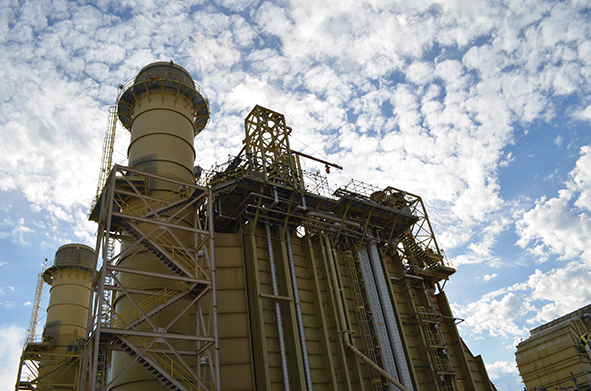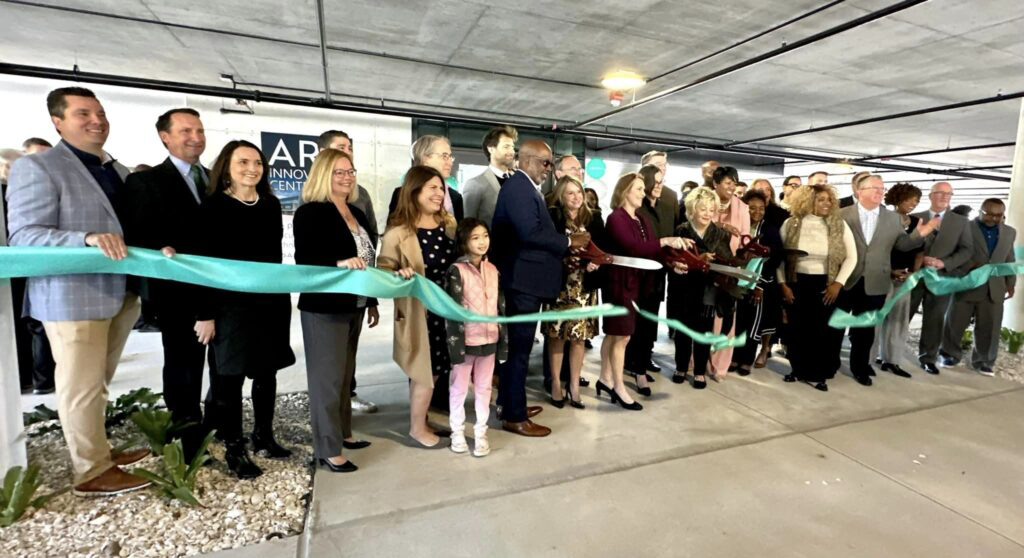
Powering Up
30 May, 2017
Today’s utilities are seeing increasing demand, and working in more operational capabilities and efficiencies as they scramble to stay ahead of the demand
When discussing the nation’s utilities, so many topics emerge around the efforts to build and develop sustainable sources of energy that there is less interest in the country’s power grid that ultimately distributes this new energy to the homes and businesses that use it.
The grid is not only the physical transmission and distribution systems that link generators to ultimate loads, but is also associated with operational, regulatory, and governance structures. Sustainable energy sources coming from regional power plants use the grid it as well.
The grid is the most critical chain in the entire energy system – and the most vulnerable to cyber attacks – and needs to be constantly updated to provide the infrastructure for transmission and distribution.
According to a report from MIT, “The Future of the Electric Grid,” the U.S. electric power grid serves more than 143 million residential, commercial, and industrial customers through more than six million miles of transmission and distribution lines owned by more than 3,000 highly diverse, investor-owned, government-owned and cooperative enterprises.
This patchwork of ownership is also a growing concern from state to state as legislators struggle to figure out reasonable rate structures, build more lines to serve more customers and try to anticipate where the demand for more power will come from next.
The Structure of Power Generation And Distribution
The electric power system of the continental U.S. actually is made of three independently synchronized grids: the eastern interconnection grid (carrying 73 percent of the electricity for the east coast), the western interconnection grid (carrying 19 percent of the electricity for the central and western part of the country), and the Electric Reliability Council of Texas (ERCOT) grid (carrying eight percent of the electricity for Texas and other southwestern states).
The system needs better management, and some of that help can come from information technology in the form of smart meters and other computer-connected and internet connected devices that have quickly become part of an evolving smart grid – the power system’s next gen advancement.
That change will not be cheap. Electric Power Research Institute (EPRI) estimated between $17 and $24 billion would be needed annually through 2030 to fully deploy smart grid technologies.
How Utilities Make Their Money
While all electric utilities use similar methods to generate electricity, each operates differently to meet the unique needs of its service area. Variables such as regulatory policy, customer demographics, usage patterns, fuel availability, and geographic conditions have a major impact on the cost of providing service and the price of electricity.
That’s a lot of moving parts to consider when providing service. But it doesn’t mean development can slow down or pause – utility providers know they have to keep ahead of demand to be profitable, and have to keep investing in improvements.
Making More Energy Available Now
One of the companies investing in transmission right now is the Bloomington, Indiana-based Hoosier Energy, a generation and transmission cooperative providing wholesale electric power and services to 18 member distribution cooperatives in central and southern Indiana and southeastern Illinois.
Hoosier Energy operates coal, natural gas and renewable energy power plants and delivers power through nearly 1,700 miles of transmission network.
According to Jeremy Sowders, economic development coordinator for Hoosier, the utility company is partnering with Kentucky-based Big Rivers Electric Corporation and putting in a transmission line for Midcontinent Independent System Operator (MISO), which is the grid system for the Midwestern part of the U.S. “That partnership is the first time we have done something like this,” Sowders says. “With that, we will be able to save costs for our members and get some payback for the maintenance of the line.”
Hoosier takes an “all of the above” approach when it comes to the sustainable/fossil fuel mix, Sowders says. “Ten or 15 years ago, we were 100 percent coal-fired,” he says. “Now we are currently putting in solar arrays throughout our member territory and eventually the goal is to get to a certain peak load.”
They will primarily evolve to using solar, mixed with some methane.
Two standout customers for Hoosier are the new Honda Manufacturing of Indiana plant in Greensburg, and the Grain Processing Corporation (GPC) company in the western edge of their territory, which manufactures a corn-based food preservative.
Power utility improvements are also in the works down south in Greenville, North Carolina, where Greenville Utilities operates as a transmission and distribution facility that has 480 megavolt amperes (MVA) of base capacity power.
They are building a new point of delivery substation which will add another 120 MVA. That is expected to be completed by the end of the year.
The utility is also building a new 115 kilovolt (kV) transmission system to tie in to that new delivery substation, which is more for reliability in the southern part of their service region. “We serve about 450 square miles of Pitt County, and had one of our point of delivery stations near the Tar River get hit by a hurricane recently,” John Worrell, key accounts and electrical engineering planner for Greenville Utilities, says. “We built a second point of delivery on higher, dry ground but it’s not capable of carrying our entire system. That’s why we added this third point of delivery, which is also out of the flood zone.”
Greenville also has different distribution substations positioned between the East Carolina University and the Spectrum Health United Medical Campus in Greenville. “There is lots of redundancy built into the grid surrounding the medical district,” Worrell says. “Plus they have their own back-up and standby generation facility on site, and we work with them on that.”
Also in North Carolina, Rocky Mount is building a big CSX Railroad project that will soon require more delivery points from an available utility to keep it operating 24/7. CSX provides rail, intermodal and rail-to-truck transload services and solutions.
In 2015, CSX invested more than $47.9 million in its North Carolina network of 1,800 miles of track.
The state of North Carolina, the Carolinas Gateway Partnership and CSX announced the new project in July, 2016. It will be an intermodal terminal called the Carolina Connector, or CCX. It is scheduled to be built by late 2019 on 400 acres that has already been purchased.
The terminal is designed to connect railways between cities in North Carolina and the airport in Charlotte. “We are already getting calls from logistics and distribution centers that need to be within 50 miles of that terminal,” Brenda Daniels, manager of economic development for Electricities, says. Electricities is a state municipal power management agency working for North Carolina, South Carolina and Virginia. “There will be a lot of properties at the terminal that are going to be available to those companies.”

The Commitment Stands Tall sculpture, Hoosier Energy Headquarters, Bloomington, IN. Courtesy of Hoosier Energy
Power substations will also be added near the terminal with enough load power for large distribution centers. “There is also a good corridor in the western part of the state where data centers could locate,” Daniels says. “We are working with one now that has an estimated 100 mw load.”
Another utility that is adding capabilities is NorthWestern Energy, based in Sioux Falls, South Dakota. The utility company owns and operates natural gas production, transmission and distribution systems, and provides electricity and natural gas in the upper Midwest and Northwest, serving approximately 701,000 customers in Montana, South Dakota and Nebraska.
NorthWestern recently announced plans for a $3.7 million upgrade of three turbine units at Ryan Dam near Great Falls, Montana. The project, to be completed between 2017 and 2020, will allow the units to use water more efficiently and add more than five megawatts of generating capacity, boosting the dam’s maximum capacity to 71 megawatts.
Ryan Dam is one of five NorthWestern Energy hydroelectric dams near Great Falls. The company owns 11 hydro facilities across Montana.
Montana in general is witnessing an economic growth spurt, with a new data center outside of Missoula that right now is using 10 megawatts of power. “They are looking to increase that to at least 20 or more,” Rick Edwards, director of key accounts and customer education for NorthWestern, says. “We are getting more and more interest from companies in regard to data center location because of climate and energy prices.”
A Jolt Of Demand
The industry, as always, has to keep up with demand, and revenues will reflect the success of that mission.
According to the U.S. Department of Energy’s Energy Information Administration (EIA), consumer demand for electricity is projected to grow at an average rate of 1.5 percent per year through 2030.
Overall, electricity consumption is expected to increase 45 percent by 2030.
To meet this increasing demand for electricity and to ensure fuel diversity and reliability, electric utilities must invest in new baseload power plants.
According to the EIA, 347 gigawatts (GW) of new capacity – both electric power sector capacity and customer-owned distributed generation – will be needed by 2030.
Based on EIA assumptions, if all of this new capacity is built, costs would be in excess of $300 billion.
Already investment in transmission has increased 116 percent since 1999, and electric utilities already invested an additional $18.5 billion through 2008 on transmission infrastructure – a 25 percent increase over the previous three years.
The EIA projects that 46 percent of the increase in total generating capacity in the electric power sector between 2010 and 2030 will be powered by non-hydro renewables, which accounted for only about 4.5 percent of 2010 capacity. Almost 90 percent of this increase is projected to come from growth in wind and solar capacity.
Related Posts
-

Pinellas County, Florida Celebrates Ribbon Cutting of the ARK Innovation Center Business Incubator
-

Time To “Pivot, Stretch, And Adapt”
-

More Efficient Agriculture Techniques are Coming into the Focus
-

Logistics Getting on a Quicker, more Focused Track
-

Opportunity Zones and Post-COVID-19 Economic Recovery
-

New Ideas Emerge for Both Sustainable and Fossil Fuel Technologies
-

New Goals and New Internet Tech Help Build Base for Advanced Manufacturing
-

Business Services Today Focus on Human Resources, Data Analytics
-

Ready to Shift into High Gear
-

The New Forestry Momentum









